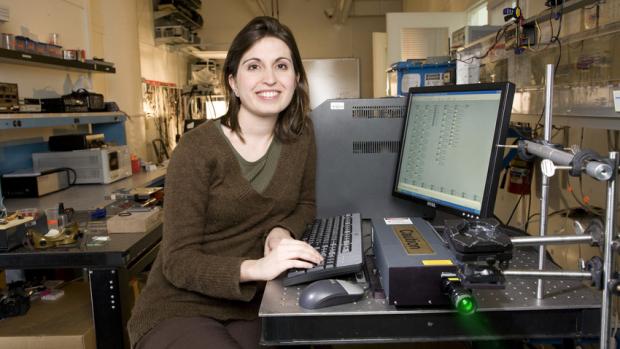NYU-Poly Student Awarded Grant to Trace Surface Water Flow
Flavia Tauro’s Innovations Garner American Geophysical Union’s Horton Research Grant

Brooklyn, N.Y. –Flavia Tauro, who is participating in a unique dual doctoral program at the Polytechnic Institute of New York University (NYU-Poly) and Sapienza University of Rome, has won the American Geophysical Union (AGU) Hydrology Section’s Horton Research Grant, a highly competitive annual award that recognizes promising graduate students in the hydrological sciences.
Tauro, who is working towards a doctorate in mechanical engineering from NYU-Poly and one in hydraulic engineering from Sapienza University, gained the attention of the AGU with her proposal for a novel fluorescent particle-based tracer for surface hydrology.
It’s important to determine how runoff—precipitation that does not infiltrate into the soil or rise back into the atmosphere as vapor—forms and what impact it can have on a global scale, Tauro explained. “Runoff can influence the evolution of the land-atmosphere system,” she said.
Traditional methods of hydrological observation are severely limited, because, as she wrote in her proposal, “Flow path complexity and heterogeneity, water turbidity, and natural flow obstructions impose severe constraints on sensing technologies.” Common tracing materials, like dyes and artificial chemicals, must be used in massive quantities to prevent dilution, are not suitable for continuous environmental monitoring, and require intrusive sensing technologies, she pointed out.
“Field experiments require environmentally resilient, non-invasive, and low-cost measurement systems that can operate in remotely controlled or unmanned conditions,” she wrote. To that end, Tauro proposes employing highly visible, eco-friendly tracer particles and remote digital acquisition devices for flow visualization. She asserts that her technique will combine the efficiency and versatility of traditional tracing methods while improving their feasibility.
The AGU, which typically receives dozens of graduate proposals annually, singled out Tauro’s as one of the best of the year, on the basis of clarity, importance, and originality, among other factors. She will receive the award, which includes $10,000 to fund her research, at the 2013 AGU Fall Meeting, to be held this year in San Francisco.
“The Horton grant is proof of what we have long known at NYU-Poly: that Flavia has a very distinguished career ahead of her,” said Maurizio Porfiri, an associate professor of mechanical engineering and Tuoro’s doctoral advisor with his departmental colleague, Salvatore Grimaldi, who holds a joint appointment at the Universita degli Studi della Tuscia, in Italy. Grimaldi added: “This is gratifying on so many levels. The dual Ph.D. program that Flavia is attending is particularly challenging, but it has allowed her to draw on the expertise of mechanical engineers to meet the needs of hydrologists. We’re all very proud of her.”
Tauro plans to test her methodology in Italy’s mountainous Rio Cordon catchment.





